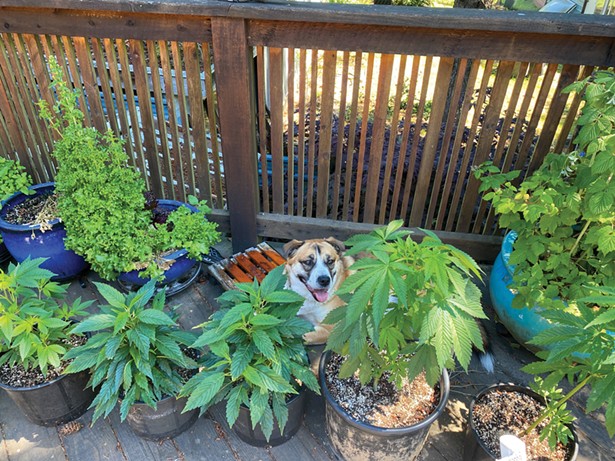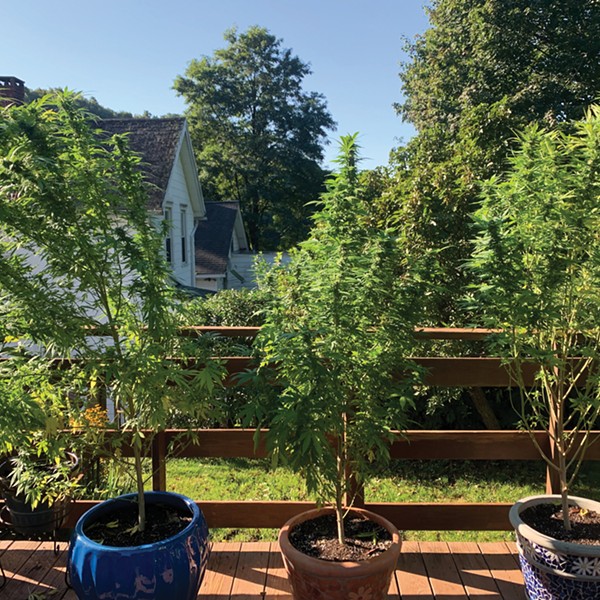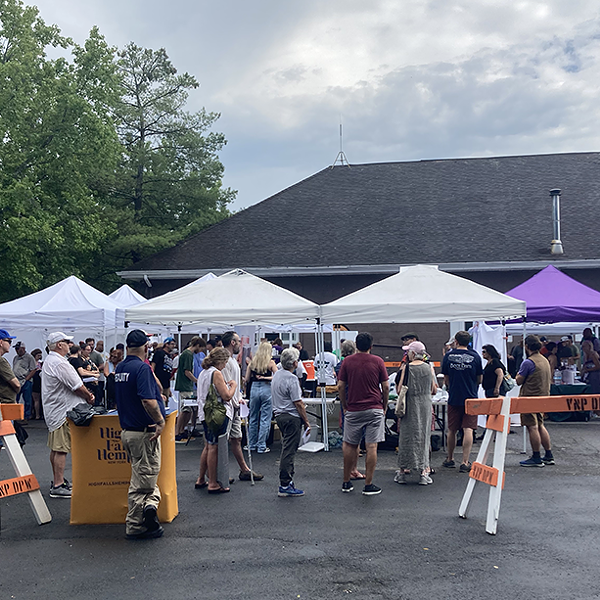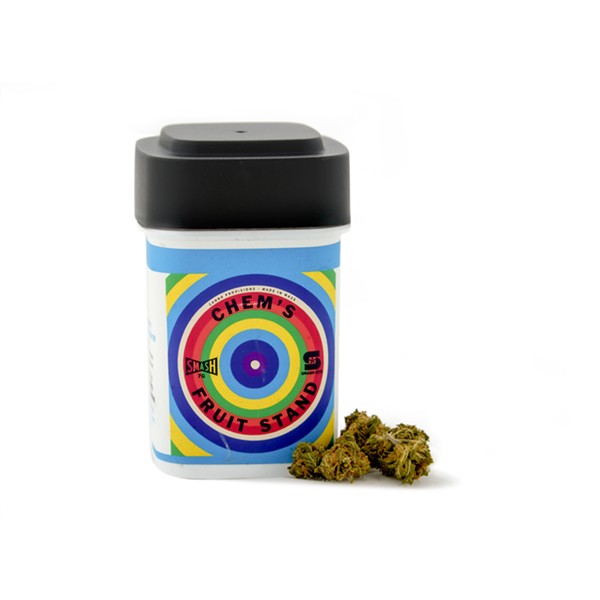
Cannabis is now legal in New York, and if you’re over 21, you can legally possess up to three ounces of it and 24 grams of cannabis oil. You can smoke it everywhere that you can smoke tobacco, and eventually, you will also be able to grow and store five pounds in your home. But before you start looking up cannabis-growing tutorials or saving up for a fancy automated home grow system, remember that it could take a year—probably longer—before retail sales begin and before cannabis can be grown for personal consumption. So, while the legalization of personal cultivation is an exciting DIY component of the Marijuana Regulation Tax Act (MRTA), those eager to start may have to wait a while before they can begin cultivating their own plants.
Getting Organized
The New York City Cannabis Industry Association and Hudson Valley Cannabis Industry Association (NYC/HVCIA) are organizations that formed as a hub for industry stakeholders to work together on all things cannabis-related. The members include entrepreneurs, consumer and patient advocates, lawyers, and regulators who, among other things, use the association to develop their networks, formulate good policy, and help each other get their businesses off the ground. They recently authored a policy paper on home grow: “Personal Cultivation, Equity, and Cannabis Markets: Creating an Ideal Cannabis Regulatory Structure.” In it, they discuss what this act says, and perhaps more importantly—what it doesn’t say—about personal cultivation.
Home Grow Timelines
If you’ve already started looking for the perfect spot in the sun to put your cannabis plants—you may want to take a small step back. It’s important to understand that while cannabis is legal, some laws are still unclear. As Michael McGuire, Chair of the Home Cultivation Committee for NYC/HVCIA, tells me during a series of conversations in June, “It is not yet clear what would happen if a person starts growing before the Office of Cannabis Management (OCM) issues rules and regulations surrounding home cultivation. The rules are still unclear to the District Attorneys and police departments across the state.”
There’s a lot we don’t know about how long issuing these rules will take, but what we do know is that medical cannabis patients are first in line. McGuire explains, “Under the current regulations, medical patients will be permitted to start growing on September 30, 2021, whereas recreational gardeners must wait until 18 months after the first authorized retail sale of adult-use cannabis products to a consumer.” Since the first retail sale may not occur until sometime in 2022 (perhaps even later), personal cultivators may not be able to begin growing legally until as late as 2024.
Slow Growth
How many plants do you think you can grow in the privacy of your own home? If your answer is “as many as I can fit,” you’re wrong. Even if you’re going by the assumption that you can grow as many plants as you want as long as the cannabis you cultivate at the end of it all doesn’t exceed the stipulated five-pound limit, you’re wrong again.
The current limitations on the number of plants residents can grow at home are set at three mature and three immature cannabis plants. There’s also a per-residence cap that allows no more than six mature and six immature plants for households with more than one adult. If this sounds confusing, it’s because these limits are still very vague, especially when it comes to cannabis plants. “Cannabis plants have a growth cycle that can make it difficult for there to be an identifiable transformation from ‘immature’ to ‘mature,’” says McGuire.
And does an immature plant include seedlings, cuttings, and clones? “Like a rose, a cannabis plant can propagate from a cutting, but we do not believe the legislature meant to include trimmings, which occur as part of routine maintenance, as ‘immature’ even though they can be replanted and become a viable cannabis plant,” McGuire adds.
This ambiguity stretches to the permitted weight of dried flowers, too—which is what the current five-pound limit refers to. McGuire explains, “Cannabis is wet and heavy when it is first harvested. Five pounds of wet plant matter translates into a minimal amount of dried and cured cannabis flower.”
And, how does the OCM plan to evaluate this weight? Like a lot else, this is also unclear. “The weight of cannabis should not use ancillary ingredients—for example, the full weight of a pan of brownies should not count against the total weight of cannabis a person is allowed to possess in their home,” McGuire says.
Cannabis Sourcing Issues
While medical patients can look forward to being legally permitted to start growing in September, some obstacles could still throw a wrench in their plans. The first is that the growing season in New York (especially outdoors) is relatively short, and most cultivators harvest in the fall.
You may have realized through all of this that you have to wait to start growing (legally), but even if the laws magically permitted home growing as soon as tomorrow, there’s another issue you’ll run into. Where would you get your plants, seeds, and clones? Federal laws haven’t changed, and crossing state lines with cannabis is still illegal. And, as McGuire says, “It is unclear whether a nursery or a dispensary will be permitted to sell plants directly to the public."
Even if this is all clarified and ironed out over the next few months, it’s already July, so realistically, even medical patients may have to wait until next year to grow outdoors.
Housing Issues
Legalization was a crucial step for communities that have been disproportionately arrested and incarcerated for cannabis historically. McGuire points out that there’s a lot that makes this a good bill. “The social equity provisions are very strong, and the right to home cultivation is foundational to a healthy cannabis industry,” he says.
The social and economic equity provisions include investing 40 percent of tax revenue in communities affected by drug enforcement, expunging past convictions, and prioritizing licenses for minorities, women-owned businesses, service-disabled veterans, and distressed farmers. Even with these promising inclusions, the MRTA’s equity provisions are up against institutional hurdles.
One that stands out is that public housing across the state, like the Housing and Urban Development (HUD) and the New York City Housing Authority (NYCHA), usually receive federal funding. It’s unclear what this will mean for residents, and it’s this lack of clarity that’s worrying. Cannabis is still illegal according to federal law, which currently prohibits even cigarette smoking in public housing. There’s no clear indication of whether there will be any protections for residents from unfair evictions or how federal and state laws will interact regarding cannabis. It’s essential to clarify this, McGuire says, adding, “If NYCHA and HUD tenants are excluded from participating in this market, be it home cultivation or consumption, we are excluding and locking out close to 1 million impacted/BIPOC New Yorkers.”
Even private landlords, who cannot prohibit home cultivation completely, can restrict it based on bylaws or leases. “They may restrict where one may grow their plants in regards to communal spaces, patios, balconies, and fire escapes,” McGuire explains. And, although counties can’t stop retail sales completely, communities and towns can opt out of retail dispensaries and set restrictions on social consumption. Municipalities like Middletown, Crawford, and North Salem scheduled public hearings in June for proposals to ban retail dispensaries and smoking lounges as part of these opt-out options.
Local governments across the state may also place further limits on growing. However, McGuire clarifies that the MRTA does not allow municipalities to ban home cultivation outright. Still, it’s unclear what these additional restrictions can include, so homeowners will want to keep an eye on what local laws will mean for their personal cultivation plans.
There’s no clarification on community garden growing either—the MRTA simply states that residents can cultivate cannabis within or on the grounds of private residences. McGuire says the MRTA should have provisions for and encourage community gardens, which could be the only accessible space for some people to cultivate their plants. “Outdoor cultivation is far cheaper and more environmentally sustainable,” he says. So, do community gardens have a plan yet, regarding what to allow or restrict for homegrowers eager to start cultivating cannabis here? Not yet, according to Cheryl Hearty, president and secretary of New Paltz Gardens for Nutrition. “The legislation won’t be finalized for quite some time. We will have to wait until we know more before making any decision as to whether or not cannabis will be allowed to be grown in members’ plots,” says Hearty.
Inspections and Penalties
With legalization come the laws to regulate it, although violations for exceeding the plant limit are expected to result in civil penalties and community service not exceeding 20 hours. The specifics of what these violations would include are unclear and will likely remain so until the OCM issues the home cultivation regulations.
A spokesperson from the Dutchess County Drug Task Force told me over the phone that while things are still vague, the legalization has put certain things in motion. “If you had a drug conviction for five pounds or less, the courts are already asking us to start sealing the records,” they say. However, there’s no word on whether anything will change for home growers until there’s more clarity about the specifics of the laws. “It’s all vague, and it’s going to cause some problems,” they add.
Perhaps most significantly, officers are now prohibited from using the “smell” of cannabis as a reason to conduct searches. But when it comes to personal cultivation, New Yorkers could face penalties if they exceed the vague six-plant limit. People should know whether penalties will be per violation or per extra plant, and McGuire says the OCM needs to clarify the consequences too, especially because those without significant experience can inadvertently exceed the three mature plant limits without realizing it. “While we agree that unlicensed sales should be unlawful, enforcing this prohibition by treating minor violations of the home cultivation law as an offense worthy of a fine, or worse, is misguided,” he says.
Imagine this scenario—there’s a knock at the door. You go and open it and find the authorities there to inspect your plants. No warrant needed. The MRTA, as currently written, does not specify whether warrants are required for residential home inspection, and that frightens McGuire. “While commercial cultivators will be subject to such inspections, we believe it is unlikely that the legislature intended to empower the OCM or law enforcement to conduct warrantless inspections of private homes,” he says.
Allowing warrantless searches would also be counterproductive to the goals of the MRTA. After all, if home growers thought that letting the government know they were growing at home could put them at risk of a warrantless search, there’s a higher likelihood of people returning to the approaches they took during prohibition—think legacy dealers and hidden grow boxes. Besides, as McGuire says, “Such searches would violate the Fourth Amendment.”
Even if the legislation didn’t intend to allow warrantless searches of people’s homes, it’s all still too vague. Who will regulate home growing limits? Who will conduct the inspections, at-will or otherwise—local police, or the OCM? The lack of clarity is pretty worrying, especially when you think of already disenfranchised groups. “We are concerned that the same communities that were grievously harmed by the War on Drugs and subjected to disproportionate enforcement of our criminal laws will be the same communities that endure regular warrantless inspections of their homes. We’re particularly concerned that individuals living in federally subsidized housing might be subjected to warrantless inspections. This would be a dangerous encroachment on their privacy and civil rights, and the OCM should immediately clarify that such inspections are not permitted under the statute,” McGuire adds.
A Way Forward
From increasing the plant limits, clarifying the weight of permitted flowers, and setting up safeguards for our most vulnerable communities, the NYC/HVCIA have several recommendations for the MRTA going forward.
One of them is increasing the plant limit, essential in part because there’s no sure-shot success rate—a plant can fail to grow for various reasons. As McGuire says, “A six-plant limit is an unnecessarily small number. The limitation is presumably to eliminate underground unlicensed commercial cultivation, but any such operation needs far more plants to be viable.”
Then there’s the issue of medical patients, who should be permitted to start growing as soon as possible. “There is no benefit to preventing the 150,000 people who possess a medical cannabis card from growing their own cannabis outdoors this summer. If the OCM waits until September, only people who can afford to grow inside their homes will be able to cultivate cannabis at home in 2021,” McGuire says.
While all of this means it’s going to be challenging for residents to start cultivating any time soon, cannabis legalization, as well as the passing of the MRTA, is still a significant step forward for New York. McGuire tells us that the legalization of personal cultivation, in particular, will be a boon for residents as well as for the cannabis industry since home growers are also usually the best customers. They’re more likely to shop at dispensaries and are great ambassadors for cannabis.
And, for those with a green thumb or even a little curiosity about the plant, being able to experiment with growing it at home eventually is an exciting prospect. “All you need to start is a seed, sunlight, soil, and water! Once you take that first step, I promise you, you’re never going to look back. It’s a fantastic hobby,” says McGuire.
















